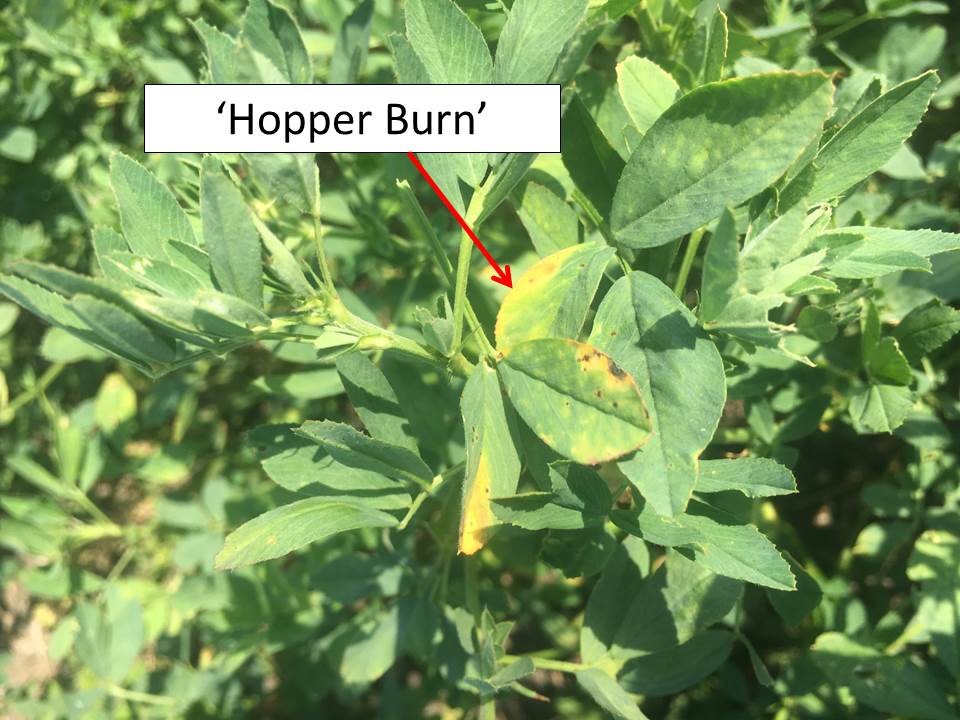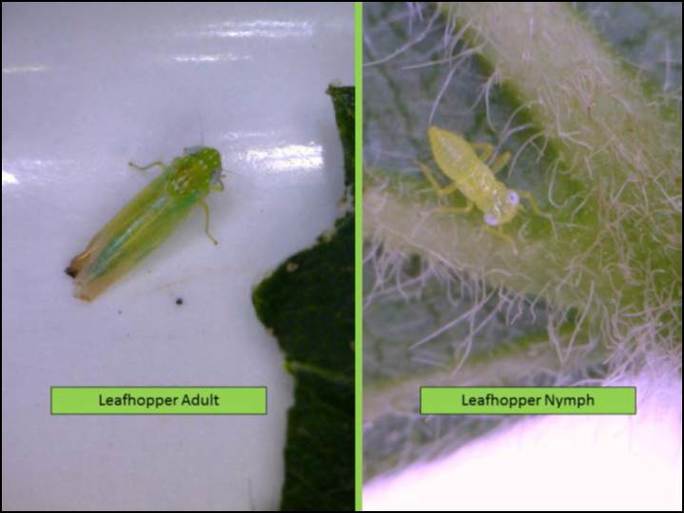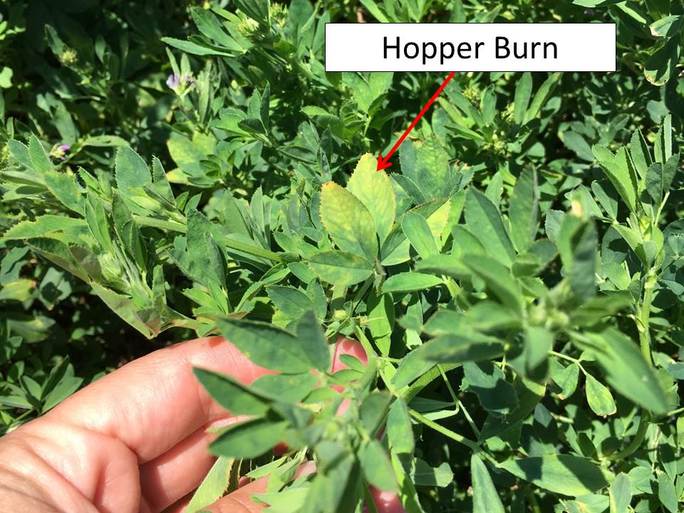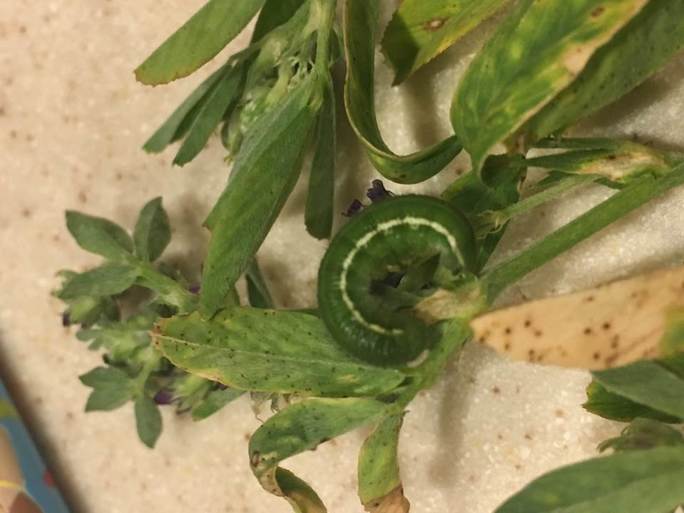–by Dr. Jeff Whitworth and Dr. Holly Schwarting
Alfalfa caterpillars are currently active throughout north central Kansas. These caterpillars are feeding on foliage, and based upon the size of the larvae in fields, will soon be pupating. In many fields, swathing is currently, or has just been done and this should help lessen alfalfa caterpillar populations. However, if the timing is such that these larvae are pupating in the soil and thus swathing does not remove/destroy the pupae, the emerging butterflies may lay eggs on recently cut fields and the developing larvae may feed on regrowth. This may retard regrowth for a couple of weeks until larvae pupate.
Potato leafhoppers are also very numerous throughout north central Kansas in uncut alfalfa fields. Thus, their characteristic feeding damage, called ‘hopper burn’, is common. Swathing should reduce potato leafhopper populations significantly and, hopefully, they will not rebound. Continued monitoring is prudent as alfalfa caterpillar feeding and potato leafhopper damage may lessen the plant’s ability to store reserves in their roots for overwintering.
For management decisions for all alfalfa pests, please refer to the 2017 Alfalfa Insect Management Guide: https://www.bookstore.ksre.ksu.edu/pubs/MF809.pdf





